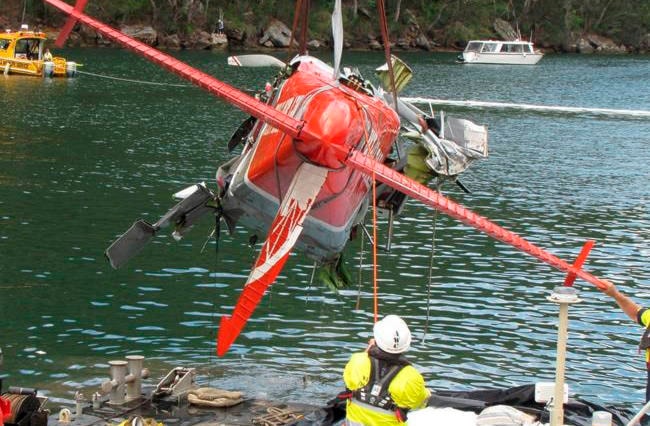A Canadian seaplane pilot was impaired by carbon monoxide fumes from engine exhaust when he flew off course and crashed into a river near Sydney in 2017 with the loss of six lives, a crash investigator said Friday.
Pilot Gareth Morgan, a former resident of North Vancouver and his five British passengers died during a joy flight on New Year’s Eve when the DHC-2 Beaver flew low into a dead-end bay surrounded by steep terrain and then crashed into the Hawkesbury River.
The Australian Transport Safety Bureau, the crash investigator, said autopsies revealed that Morgan and two passengers had elevated levels of carbon monoxide in their bodies.
“The levels of carbon monoxide were likely to have adversely affected the pilot’s ability to control the aircraft,” bureau chief commissioner Greg Hood said in a statement.
The passengers were Compass Group chief executive Richard Cousins, his fiancee Emma Bowden, her 11-year-old daughter, Heather Bowden-Page, and his two sons William, 25, and Edward, 23. The bureau did not say which had been effected by carbon monoxide or reveal the concentration levels.
Investigators also found cracks in the exhaust system of the plane that was built in 1963 and bolts missing from a firewall that would have allowed carbon monoxide to leak from the engine bay into the cabin, the bureau said.
The plane’s owner, Sydney Seaplanes, said in a statement it had a strict program for engine maintenance and inspection which was performed by a regulator-approved organization.
The missing bolts were not a fault that would be discovered by the pilot during his pre-flight safety checks, the owner said.
Based on the ongoing investigation, the bureau on Friday warned owners of all piston-engine planes to takes steps to detect carbon monoxide in cabins.
The bureau has not said when its final report on the cause of the crash will be released.
Rod McGuirk, The Associated Press
Like us on Facebook and follow us on Twitter.
Want to support local journalism? Make a donation here.
